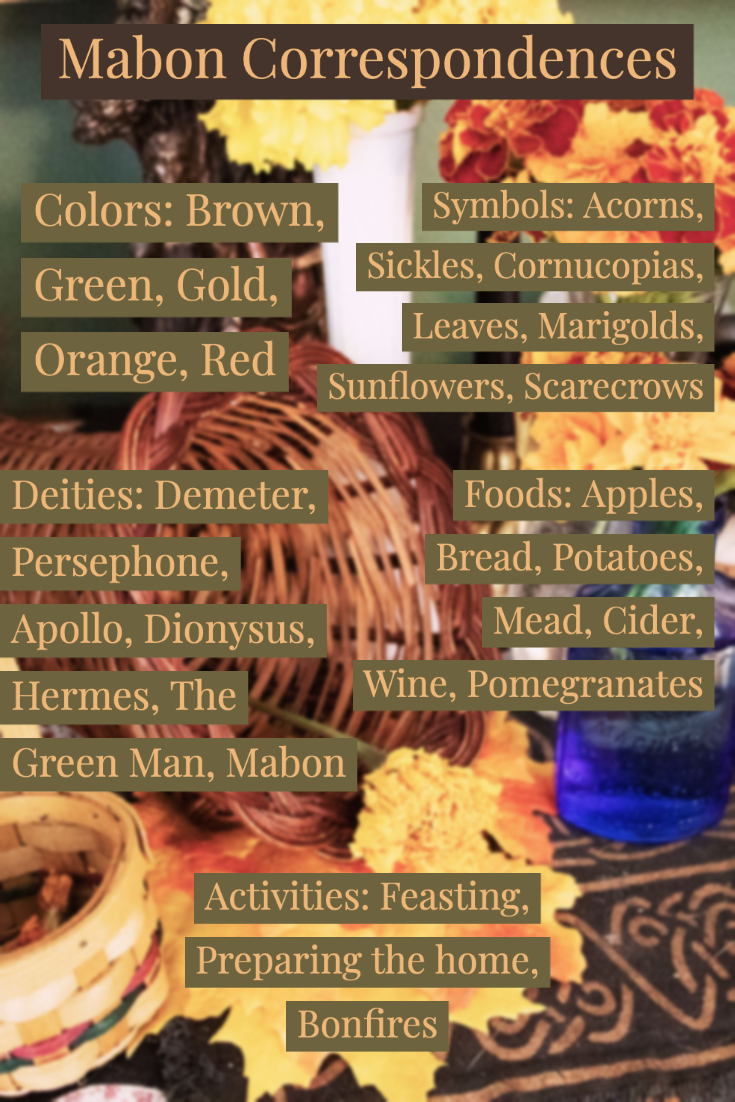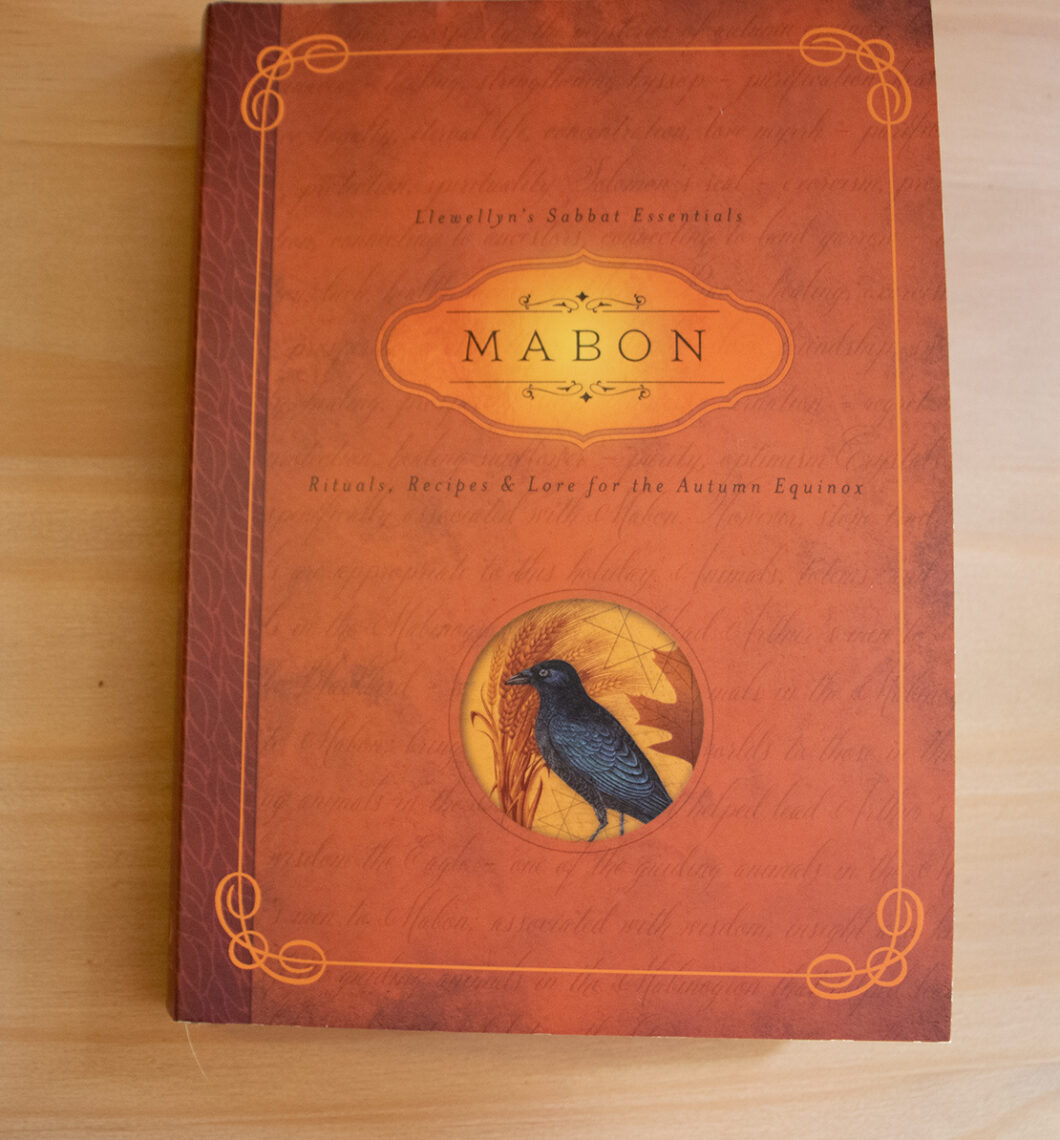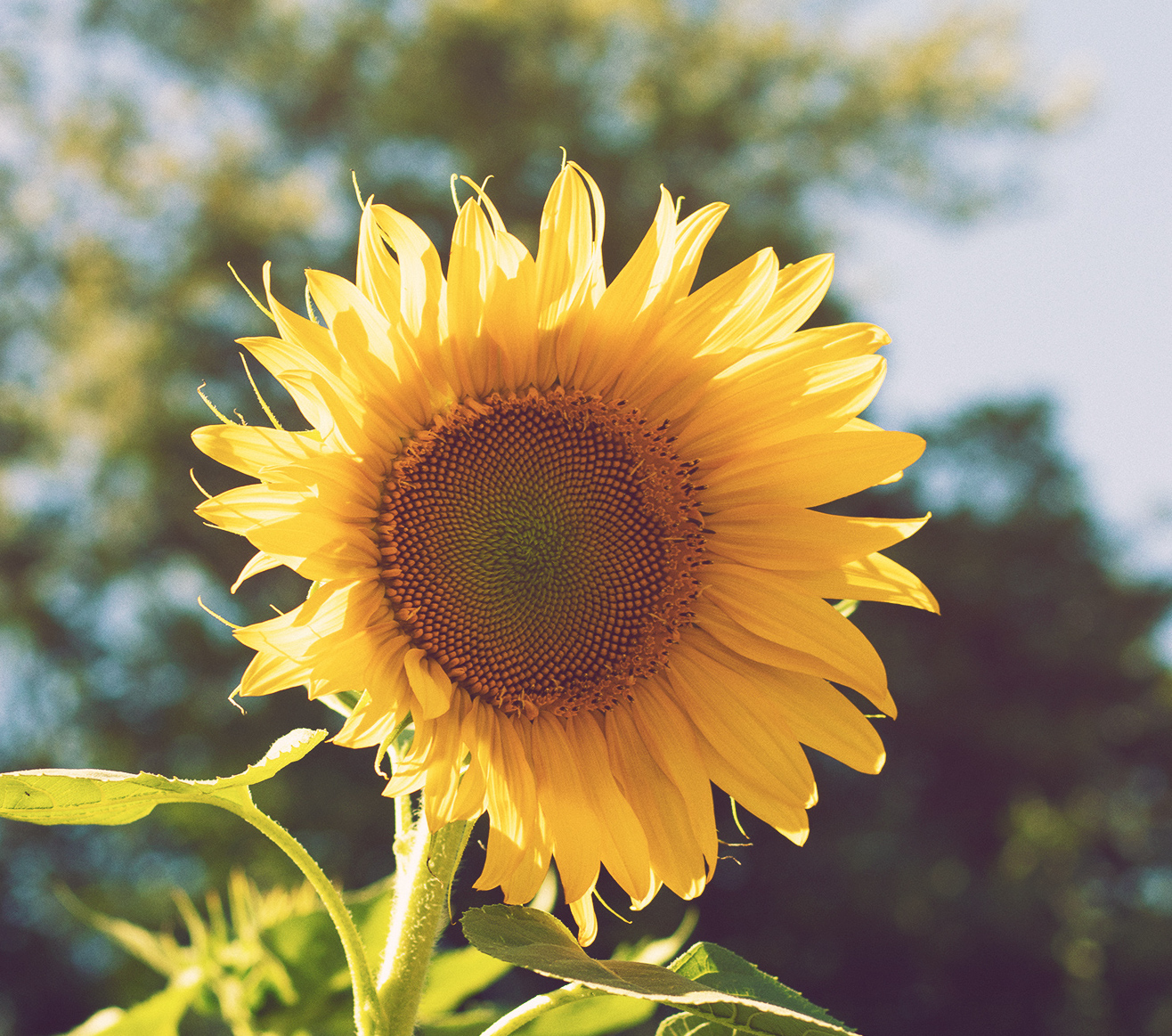Mabon is one of the 8 sabbats celebrated in the pagan and Wiccan wheel of the year. It is the second harvest festival, which occurs on the Autumnal equinox, around September 21st to the 24th in the northern hemisphere. Similar to each of the sabbats, Mabon provides a rich opportunity to connect with the natural world.
Now more than ever these celebrations are a chance to renew our spirits and faith amid the crisis of Covid-19. But how do you celebrate this sabbat during quarantine? Today I wanted to share some information on Mabon and how I plan to celebrate.
Disclaimer: This site contains affiliate links to products. Orion the Witch is a participant in the Amazon Services LLC Associates Program, an affiliate advertising program designed to provide a means for sites to earn advertising fees by advertising and linking to amazon.com. I may receive a commission for purchases made through these links.
The Autumnal Equinox and Mabon Explained
There are two equinoxes each year. One is in the spring, known as the vernal equinox, which is when Ostara is celebrated. During an equinox, night and day are both equal in length.
The Autumnal Equinox marks the point prior to when the days start becoming shorter than nights. As such, a key theme of Mabon involves balance. Likewise, as a harvest festival, other traditional activities deal with preparing for winter and expressing gratitude.
Unsurprisingly, there are a lot of pagans and wiccans who celebrate Mabon as a sort of ‘pagan thanksgiving.’ This is because many of the themes surrounding Mabon involving gratitude, sacrifice, and giving back to the community. It also includes feasts.
Unlike Lughnasadh/Lammas and Samhain, Mabon isn’t one of the major fire festivals celebrated by the Celts.
This is important to note because the Wiccan wheel of the year has been heavily influenced by Celtic traditions. And although Mabon draws on Celtic lore, it is also tied to the Eleusinian Mysteries, a sacred harvest festival celebrated in ancient Greece.
Truthfully, there’s this idea that the sabbats are celebrated today just as they were historically. However, each of the sabbats are comprised of modern interpretations and re-inventions of ancient celebrations from various cultures.
Therefore, it’s important to remember that they aren’t all going to be ‘historically accurate’ and that’s okay. The way we experience the seasons has changed over the centuries and while many of the themes remain, we can celebrate and experience the magick of the sabbat without needing to maintain a completely rigid tradition.
Themes of the Autumn Equinox
As mentioned above, balance and harmony are key themes of Mabon. But the autumn equinox also marks a time when the days are starting to get colder, the leaves are beginning to change color.
With each passing day, summer becomes nothing more than a fleeting memory. The equinox reminds us that the seasons don’t last forever. But with each passing season, we are offered new opportunities and the chance to experience change.
Traditionally, the autumnal equinox marked a time where farmers would have a day to relax and take a break from the busy days of harvesting. This was also the time when they would make decisions about what livestock to care for throughout the winter.
Similarly, farmers and entire towns would celebrate the successes of their harvest. In our modern interpretation of the sabbat, we do something similar through expressing gratitude.
Despite many of us not being farmers anymore, we can still celebrate the harvest, perhaps it’s through gathering the last of our herbs and vegetables in our witchy garden. Most of all, we can celebrate the harvest by having our very own feast.
Archetypes and Deities of Mabon
Both the wheel of the year and the individual sabbats tell a story. At Mabon, this story is about the sacrifice of the god of vegetation. In order to have a successful harvest, it is said that the god of the harvest sacrifices himself. This myth is the catalyst for the goddess’ descent into the underworld at Samhain.
Consequentially, Mabon carries with it an association with death and grief. Not only do we recognize the sacrifices made for our survival but we honor them with gratitude. Likewise, this is a time to heal and to release our grievances. Even if this is the sadness over the loss of summer.
In line with the archetype of the vegetation god, some notable deities involved with Mabon include: Demeter, Persephone, Apollo, Dionysus, The Green Man, Hermes, Mabon, and Thor among others.
Notably, the story of Persephone is an important aspect of Mabon. After eating six pomegranate seeds in the underworld and marrying Hades, Persephone must reside and rule over the underworld for six months each year. This is the myth that the Greeks used to explain autumn and winter.
If Persephone is a goddess you work with, then Mabon is likely an important sabbat for you.
Magick and Activities for the Sabbat
Despite food being one of the best parts of any sabbat, I would like to first mention a few magickal activities that you can still partake in while in quarantine.
Because preparing for winter is an important aspect of Mabon, this is a great activity for the day. Since we’ve all been cooped up in our homes for quite some time now Mabon is an excellent time to clean and organize your home for the winter.
Additionally, this might be the perfect opportunity for you to go over your schedule and make sure you’re prepared for the busy days ahead. In fact, I’ve been setting up a bullet journal recently to help me stay organized as an online student with a new job and my hens that will need extra care through the winter.
With this in mind, I’d like to talk about performing a ritual to cleanse and bless the home for the year. This ritual can be as simple or complex as you’d like. Firstly, I’ll start by cleaning the floor of my room with either a broom, my besom, or even a vacuum. While I do this, I like to imagine the negative energy in the space being swept up with the dust and dirt.
Afterward, I’ll light a nice seasonal candle that smells like autumn with the intention of filling my home with feelings of comfort. If I feel it needs extra energy I’ll go around my home and asperge full moon water with this same intention.
Like the seasons, the energy in our home changes over time. Similarly, our needs within our home can change. In the spring and summer, my home might be more of a springboard for outdoor activities or going to new places. But in the winter, my home is a place for rest and relaxation – as well as a place to host friends and family.

Other Mabon Activities
Honestly, I love the fall. October is my birth month, as well as Samhain occurring at the end. There’s just something magical in the falling leaves and changing weather. But if you live in the Midwest such as myself, then you know just how easily the season can change to winter.
So, why not spend some time outside to honor Mabon? Maybe it’s to watch the leaves fall or find ones in beautiful shades of yellow and red.
Alternatively, maybe you want to relax outside in front of a bonfire. A bonfire in the fall is one of my favorite things to do.
A Magickal Mabon Feast
There’s no better way of attuning to the cycles of nature than enjoying seasonal foods. If I’m being honest, I don’t do a lot of cooking most days. And while that’s something I’d like to change, the sabbats are when I most want to!
Food is such an important part of our lives. A home cooked meal made with love can cure just about anything! But many of us are rather disconnected from our food sources. So when a sabbat comes along, it’s especially nice to try eating seasonal foods.
In fact, autumn and Mabon have some of my favorite seasonal foods. Apples, pomegranates, bread, potatoes, and warm autumn meals all come to mind. As well as apple cider, wine, and perhaps some spiced teas and other hot beverages.
Although I save pumpkin pie until Samhain and the later parts of fall, there’s something I’m going to try making for the first time this year: Apple pie!
I love the idea of baking a homemade apple pie for Mabon and sharing it with my family to enjoy the changing season.
Recently, I’ve been sorting through my grandma’s old recipe cards. Sadly, I haven’t found her apple pie recipe. But I’m certain it’s around here somewhere.
Once I find the recipe, I’ll plan to share it with you. And I’ll be sure to update you on how mine turns out after I make it.
Decorations and Correspondences
Another one of my favorite parts of the sabbats is seasonal decorations! Before becoming a witch, I loved decorating my room for Halloween and Christmas. But now, I have eight sabbats each full of wonderful ideas for decorating!
For the autumn equinox, I love decorating my altar with fallen leaves, acorns, and now fresh marigolds cut from my garden! I also have a lovely little cornucopia that I set out. Inside the cornucopia I’ll leave some apples as an offering to my deities. Awhile back I got some little scarecrows from the craft store that I also plan to put out.
Other ideas include the colors brown, green, orange, red, yellow, and gold. As well as, flowers are still in bloom such as carnation and sunflowers. Sadly, my sunflowers are way too big to put in a vase. Additionally, scents from oils, incense, or candles like cinnamon, cedar, pine, or spiced apple are a great way to invoke the season.
Additional Reading
For more information about Mabon and how to honor the sabbat I highly recommend “Llewellyn’s sabbat essentials Mabon Rituals, Recipes & Lore for the Autumn Equinox”. This little book has several lovely spells, rituals, and invocations for the sabbat. It also explores the lore for the equinox, provides plenty of great information as well as recipes for seasonal foods.
Click the link here to find it on Amazon!

Conclusion
In summary, Mabon is a time to celebrate the harmony of night and day as we herald in the autumn and coming winter. There’s a great deal of lore to each of the sabbats and no matter how you celebrate we are all able to come together in our understanding of the seasons.
How do you celebrate the autumn equinox? Is there something you think others would like to know about the sabbat? Let us know in the comments below!

Recent Comments